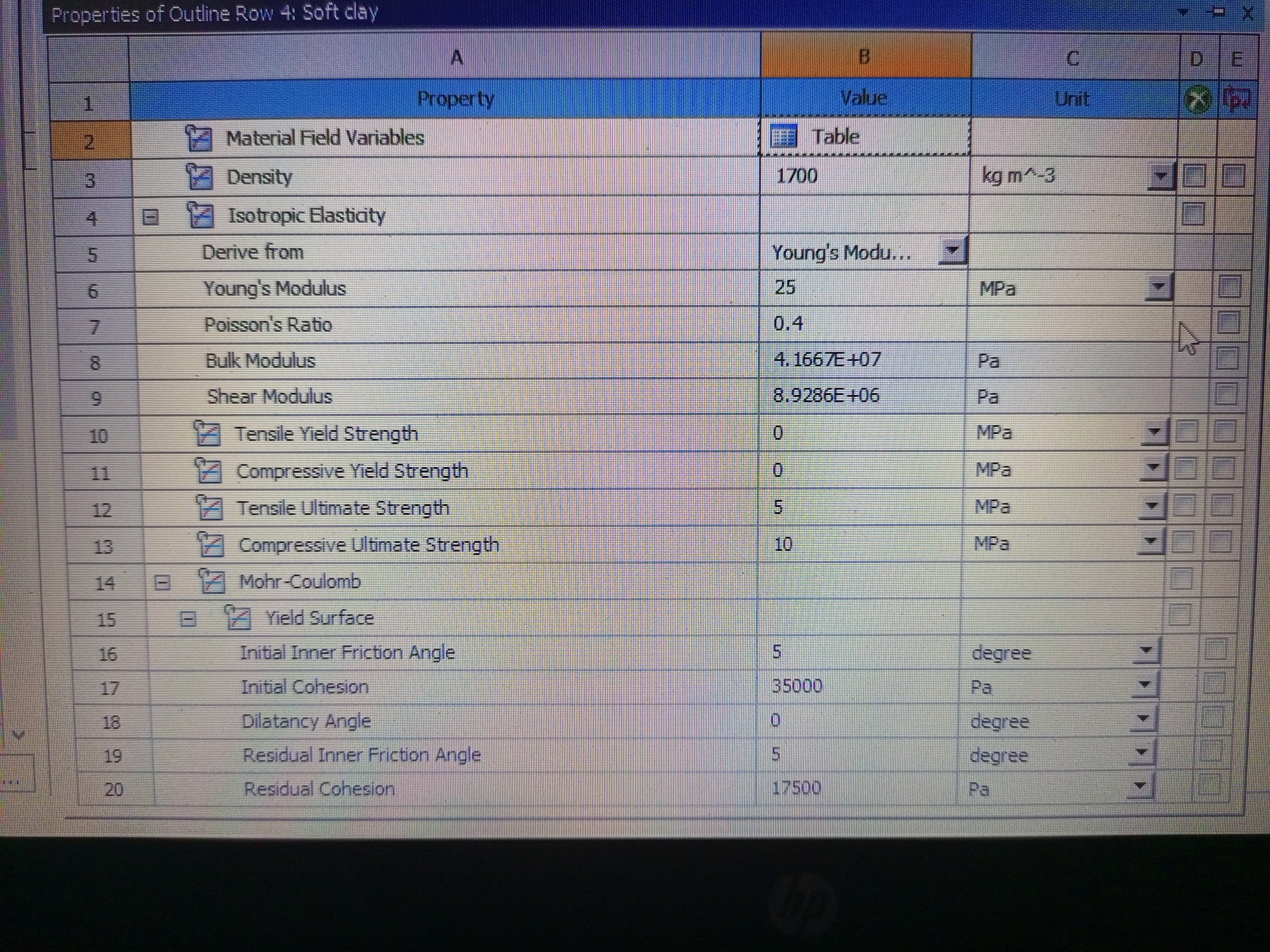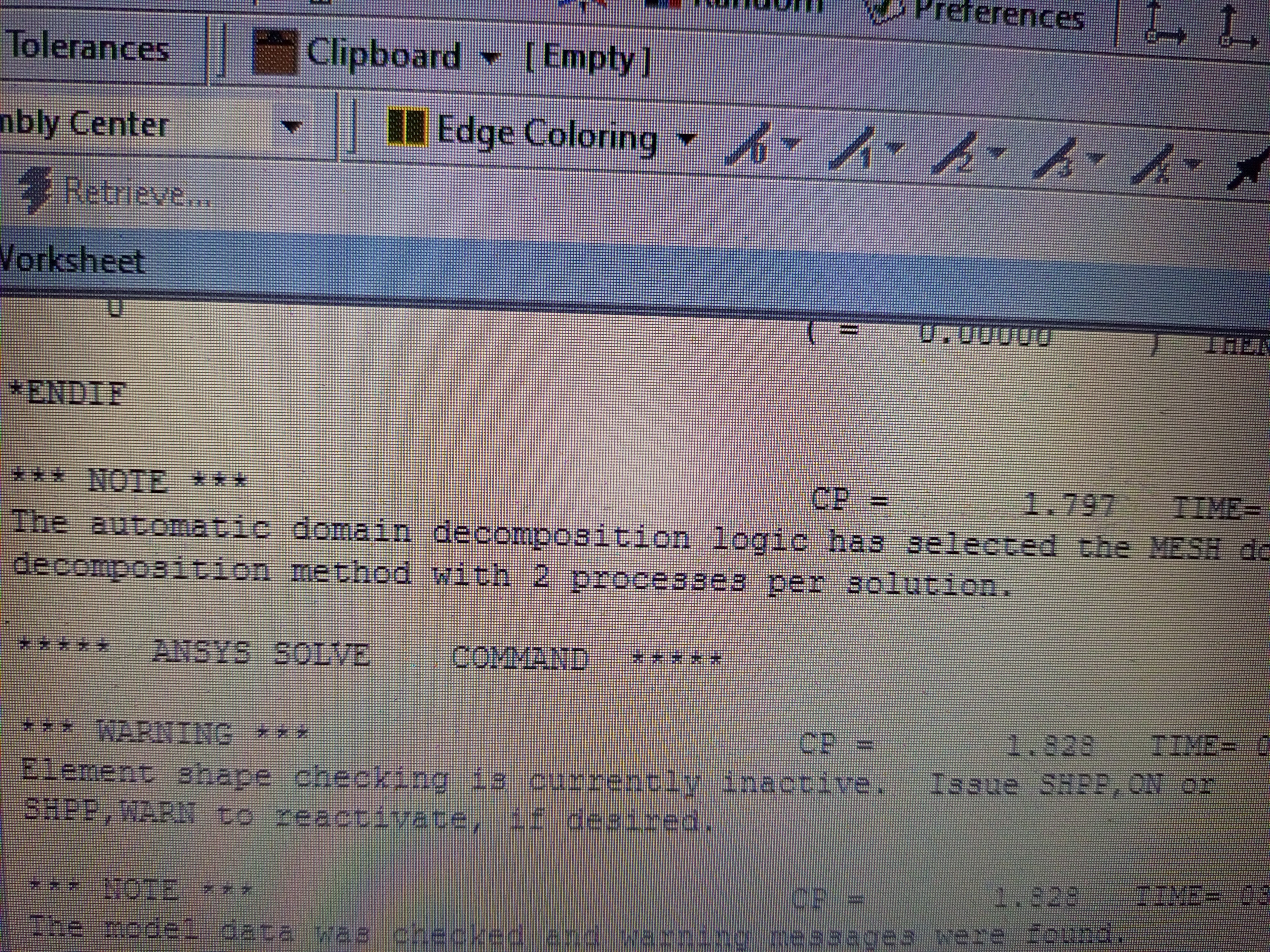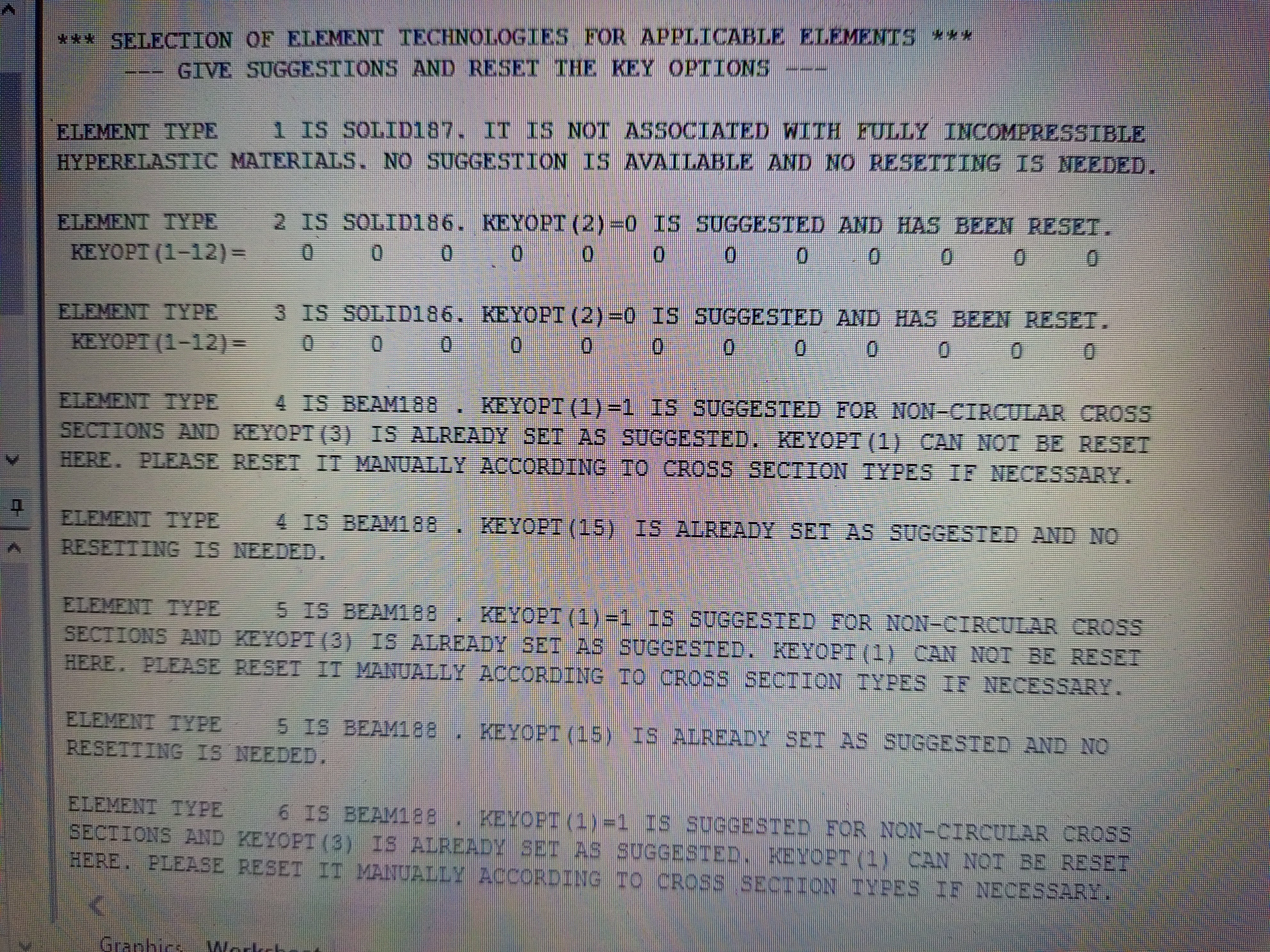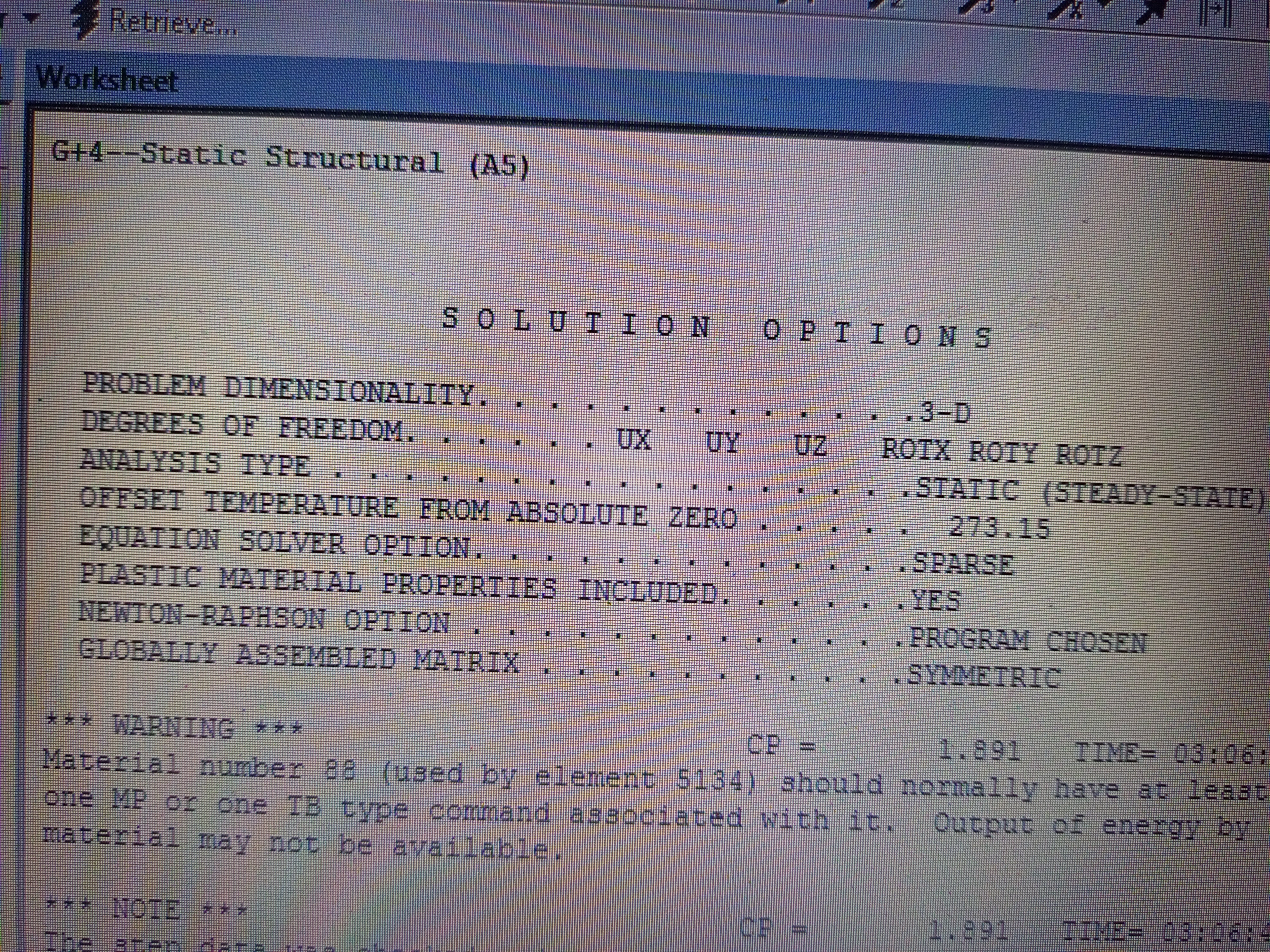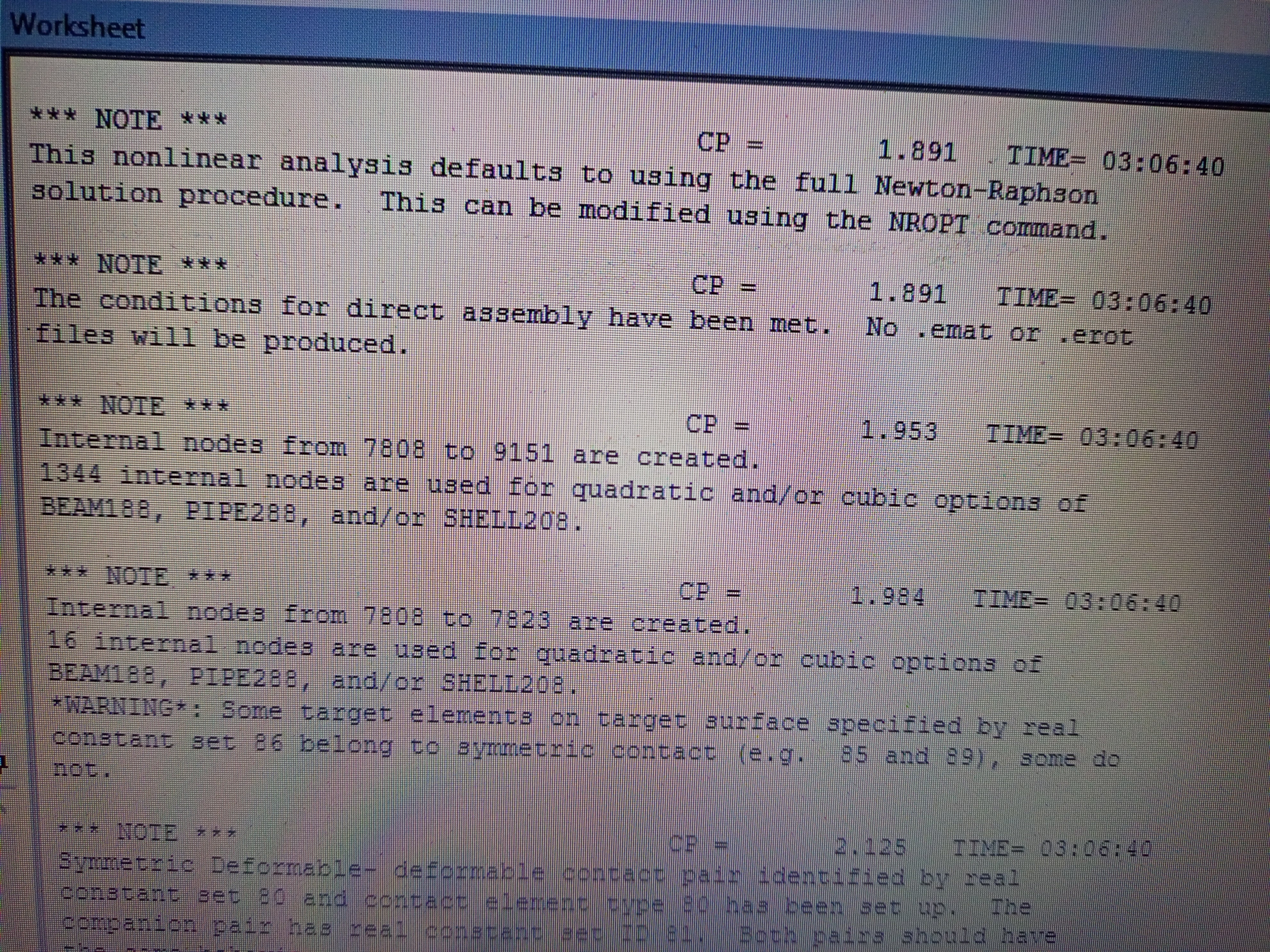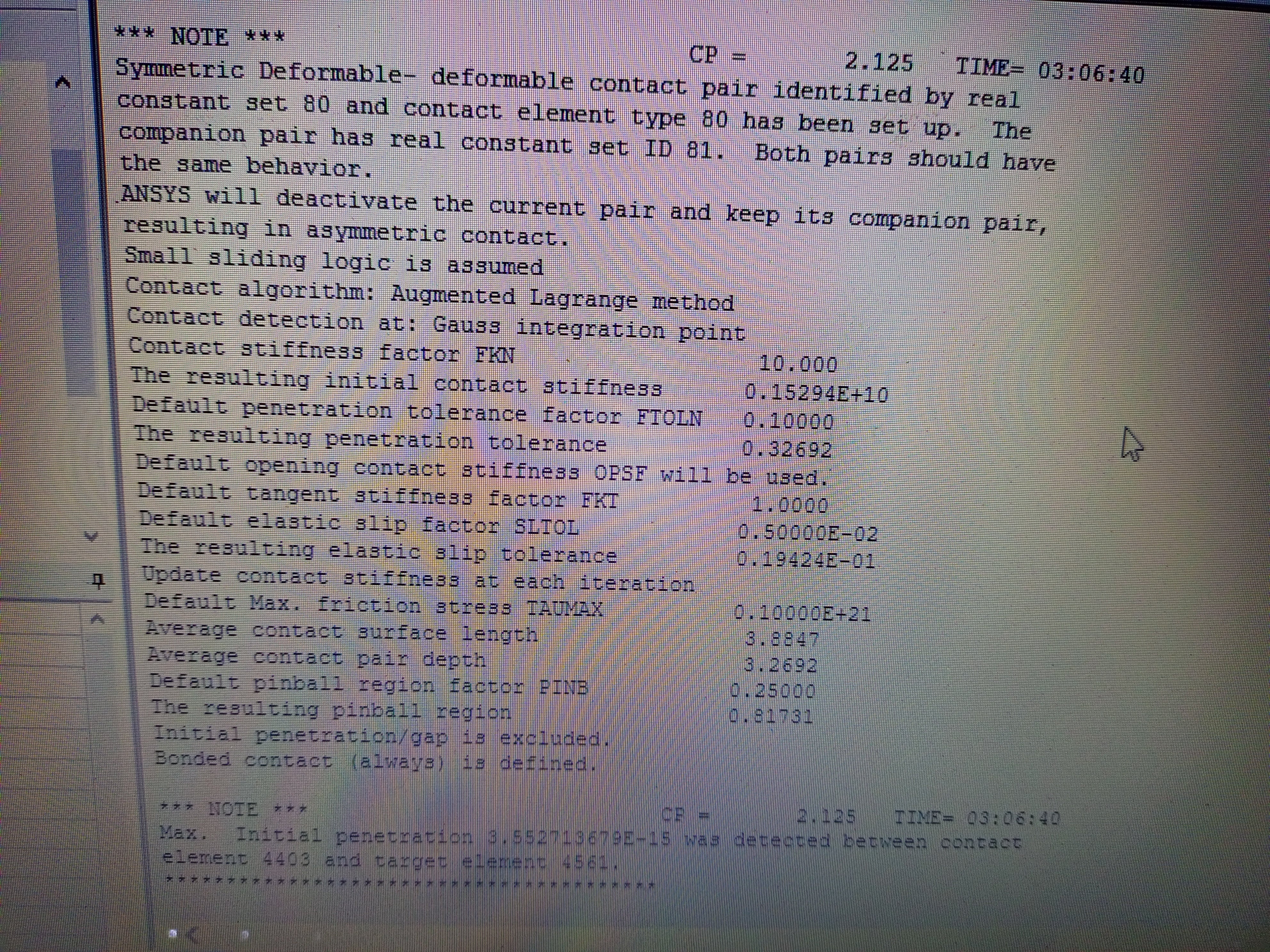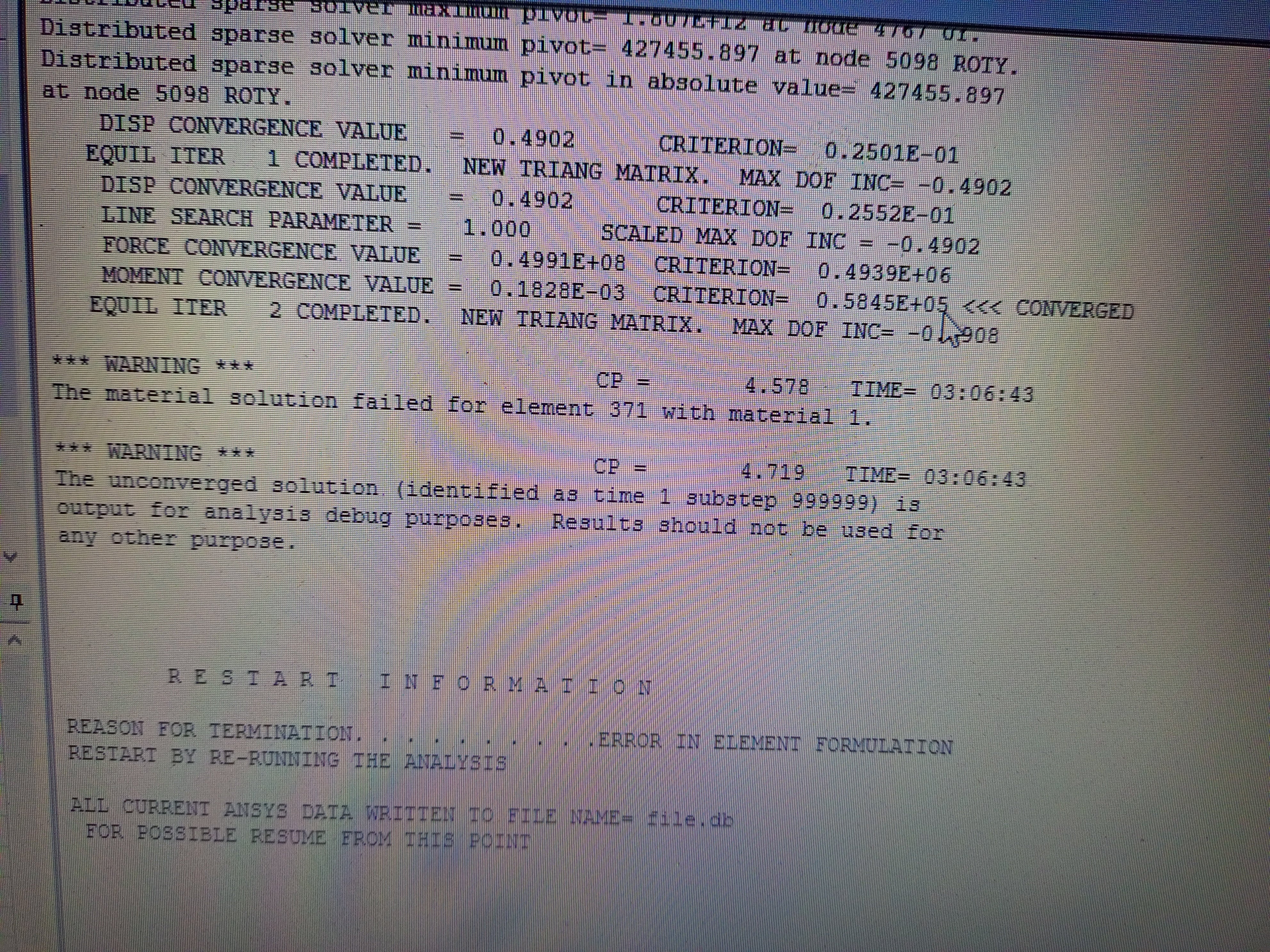-
-
October 9, 2021 at 9:09 pm
sumed
SubscriberOctober 9, 2021 at 9:26 pmRameez_ul_Haq
SubscriberGo to the Solver Output file, and search for errors. The source and cause of error most probably will be written there. If you cannot find anything useful there, then goto the folder where this ANSYS model is stored, and check for .err file. This might be helpful in diagnosing the error type.
October 9, 2021 at 9:45 pmOctober 10, 2021 at 1:40 ampeteroznewman
SubscriberPlease use the Snipping Tool to capture a screen snapshot for your reply. No more photographs of your screen, okay?
This is the error:
 It means the Mohr-Coulomb material model had no solution.
It means the Mohr-Coulomb material model had no solution.
What boundary conditions do you have for the five sides of the soil block?
What is boundary condition B shown in the image?
Do you have a Gravity load?
Did you turn on large Deflection?
Did you turn on Auto Time Stepping?
What did you use for Initial, Minimum and Maximum Substeps?
October 10, 2021 at 11:29 amsumed
SubscriberThanks for the reply.
From the next time i will surely give screen snapshot instead of photograph.
Initially i was only providing the fixed support at bottom of soil face and not provided any boundary condition on the rest four sides. But now when i provided displacement on the rest four sides allowing displacement only in y direction keeping x and z direction displacement 0.
My static structural analysis model has perform the analysis but in modal analysis its showing the same error. Also the total deformation which is coming in static structural is high.
I have provided standard gravity load for both the analysis.
Large deflection is off for static structural.
In Static structural analysis why it is showing such high deformation and that same unknown error in modal analysis?
Thank you
October 10, 2021 at 12:38 pmpeteroznewman
SubscriberModal analysis is a linear analysis so you can't use nonlinear material models like M-C. Delete the M-C and run with only Linear Isotropic Elasticity.
The deformation may be high in Static Structural because you have not turned on Large Deflection. Turn that on and see how much that changes the deformation.
October 10, 2021 at 1:26 pmsumed
SubscriberThanks for the suggestion.
For modal analysis its worked.
But for static structural part there is no changes in deformation even i run the model keeping the large deflection on.
Raft is placed at 3m depth and it's size is 12m*12m. Soil box size is 40m.
Should i need to increase the box size of modelled soil?
If there is any other suggestions please suggest.
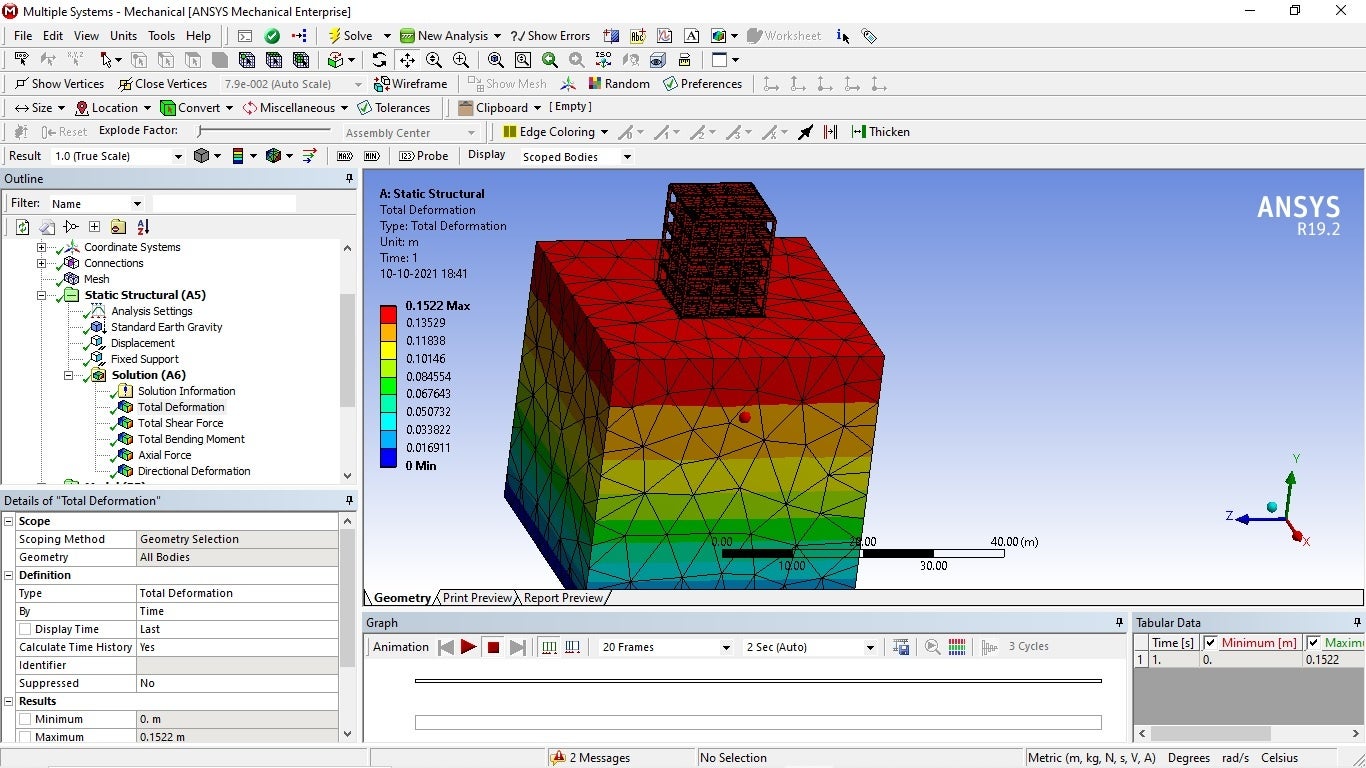 Thank you
Thank you
October 10, 2021 at 1:31 pmsumed
Subscriber
October 10, 2021 at 1:59 pmpeteroznewman
SubscriberIt would be slightly more accurate to have two displacements for the sides, one that only sets X = 0 and another that only sets Z = 0 and instead of a Fixed Support on the bottom, that would be a third displacement of Y = 0. These may not make much of a difference as you make the solid boundary further away.
Don't plot Total Deformation, plot Directional Deformation in the Y axis. I expect that 0.15 m displacement is downward, is that correct?
Try meshing just a soil box with no raft in the model. What is the deformation then? Use that as a baseline to compare with the additional deformation when the weight of the raft is included.
You could begin the simulation with the soil prestressed with the state of stress from the gravity load using the INISTATE command. Look it up in the Mechanical APDL section of ANSYS Help. You can also find several posts on this in the forum. That way, when the simulation starts, the soil is already in equilibrium with gravity, and the only deformation is that needed to support the new weight of the raft.
Another approach is to use the information from the soil-only model for the vertical deformation due to gravity. Make a 2-step simulation where you have a displacement on the raft that moves it the same distance that the soil moves in step 1, then in step 2, remove the displacement constraint and let the raft sink further into the soil due to its weight. Now you can look at the difference in Y deformation between step 1 and step 2.
Try doubling the size of the soil box. Does that reduce the deformation?
October 10, 2021 at 3:04 pmsumed
SubscriberThanks for the reply.
No total deformation should not be that much. Even Directional deformation in y direction downward is 0.15 m which is wrong.
I will try with the suggestion given.
Thank you
October 10, 2021 at 9:10 pmpeteroznewman
SubscriberWhy do you say that the deformation is wrong? Have you tried putting a 40m cube of soil from the surface of the earth into earth orbit where there is no gravity? I predict it will expand along the y axis by 0.15 m when floating weightless in orbit.
As I mentioned, if you correctly prestress a 40 m cube of soil using the INISTATE command, when you run a simulation using standard earth gravity, the deformation at the surface will be exactly zero.
October 10, 2021 at 9:49 pmsumed
SubscriberThanks for the valuable suggestion.
I will try to prestress the soil using INISTATE command.
October 14, 2021 at 10:11 amsumed
SubscriberI tried but not able to understand how to use this INISTATE command to prestress the soil to make it equibrium with gravity.
Can you please help me with the steps to use this command. It will be a great help.
Thank you
Viewing 12 reply threads- The topic ‘I am modelling soil as a soft clay using Mohr coloumb. Every time it saying unknown error.’ is closed to new replies.
Innovation SpaceTrending discussionsTop Contributors-
4678
-
1565
-
1386
-
1241
-
1021
Top Rated Tags© 2025 Copyright ANSYS, Inc. All rights reserved.
Ansys does not support the usage of unauthorized Ansys software. Please visit www.ansys.com to obtain an official distribution.
-
The Ansys Learning Forum is a public forum. You are prohibited from providing (i) information that is confidential to You, your employer, or any third party, (ii) Personal Data or individually identifiable health information, (iii) any information that is U.S. Government Classified, Controlled Unclassified Information, International Traffic in Arms Regulators (ITAR) or Export Administration Regulators (EAR) controlled or otherwise have been determined by the United States Government or by a foreign government to require protection against unauthorized disclosure for reasons of national security, or (iv) topics or information restricted by the People's Republic of China data protection and privacy laws.

